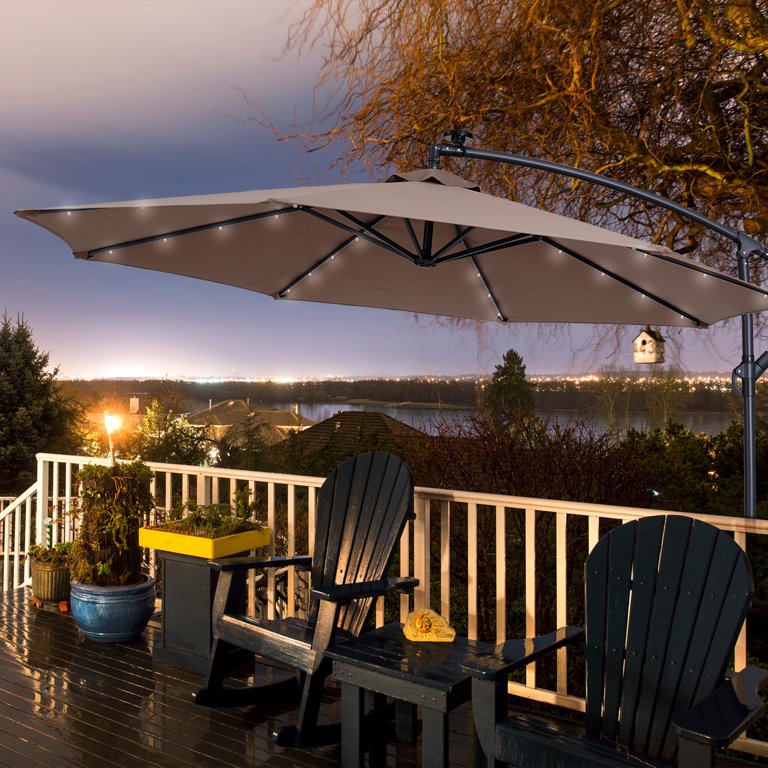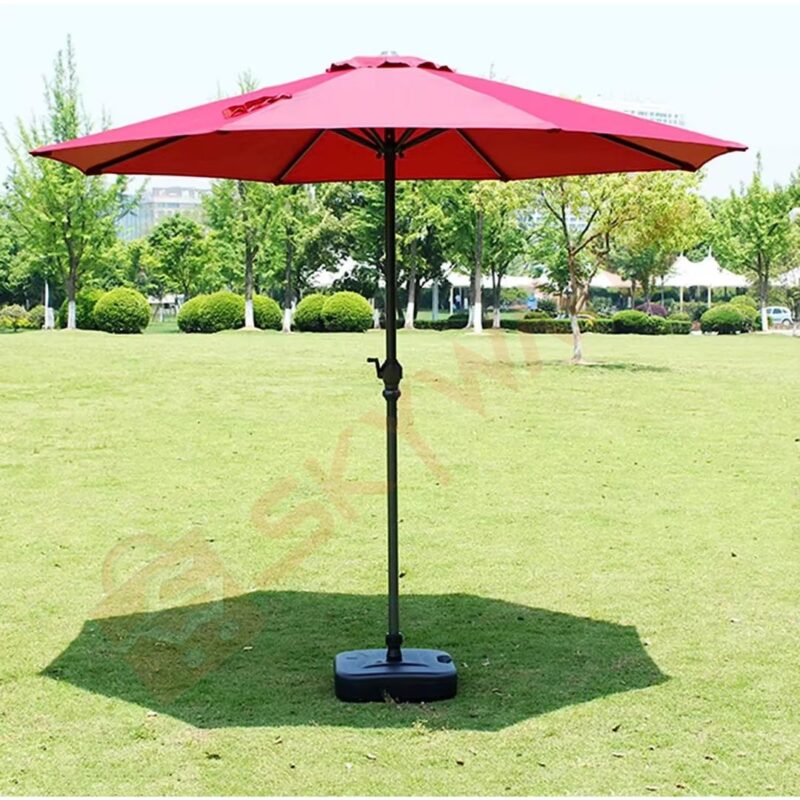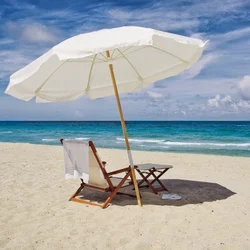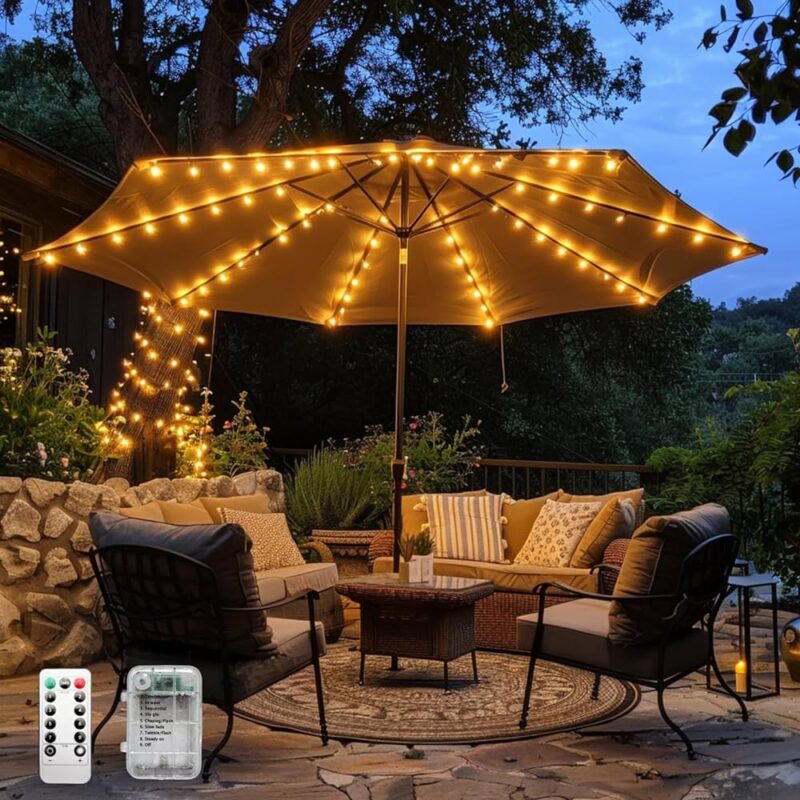Types of Patio, Outdoor umbrellas: Which one do you need?

Introduction
Investing in an outdoor umbrella is crucial because the right umbrella can significantly impact your outdoor experience. If you have no idea which patio umbrella you need whether it’s for a cozy backyard, a bustling café, or a luxurious hotel patio, have no worries you have landed at the right place. This guide will walk you through the types of outdoor umbrellas available in Kenya, what to consider when buying one, and maintenance tips, along with answers to frequently asked questions. Enough chit-chat—let’s jump into the umbrella jungle and see what kind of shade we can find together!
Types of Outdoor Umbrella
Now, I’m sure you didn’t just stumble upon this article by accident so I’m guessing if you’re reading this, you’ve already seen an outdoor umbrella or two in your lifetime. But let’s define it anyway for that one person who might’ve thought this was about fancy hats, just to make sure we’re all on the same page!
An outdoor umbrella, often known as a patio umbrella, garden umbrella, or sunshade, is a large, canopy-like structure designed to provide shade and protection from the sun, wind, and light rain. It typically features a sturdy pole with a wide fabric canopy that can be adjusted to various angles, making it a versatile addition to any outdoor space.
Outdoor umbrellas are versatile and can be used in various settings to provide shade, and protection, and enhance the overall ambiance of the space. Here are some of the common places where outdoor umbrellas are used:
1. Gardens and Backyards – Outdoor umbrellas are perfect for residential gardens and backyards, providing shade for outdoor seating, dining areas, or play spaces for kids. They enhance comfort and style, making outdoor relaxation more enjoyable.
2. Patios and Decks – Patios and decks often serve as outdoor living areas, and umbrellas provide the necessary shade to keep these spaces cool and protected from direct sunlight. They are ideal for family gatherings, BBQs, and casual lounging.
3. Cafés and Restaurants – In commercial settings like cafés, restaurants, and bars, outdoor umbrellas create a welcoming atmosphere for customers. They offer shade for outdoor dining areas, allowing patrons to enjoy their meals comfortably without worrying about the weather.
4. Poolside Areas – Umbrellas are commonly used around swimming pools to provide shade for loungers and seating areas. They help protect against sunburns and make poolside relaxation more enjoyable, especially in sunny weather.
5. Beach Settings – Beach umbrellas are lightweight and portable, making them perfect for seaside outings. They provide shade while you relax on the sand, protecting you from the harsh sun and wind.
6. Hotels and Resorts – Hotels and resorts use outdoor umbrellas in various settings, including poolside lounges, gardens, terraces, and balconies. They offer guests a luxurious and comfortable experience while enjoying outdoor amenities.
7. Outdoor Markets and Events – Outdoor umbrellas are often seen in markets, fairs, and events to provide shade for vendors and attendees. They offer a practical and attractive solution for sun protection in open spaces.
8. Rooftop Terraces and Balconies – For urban spaces with limited outdoor areas, umbrellas are ideal for rooftop terraces and balconies. They provide shade and privacy, transforming these spaces into cozy relaxation spots.
9. Parks and Picnic Areas – In public parks and picnic spots, outdoor umbrellas offer a place to sit and enjoy nature without worrying about the sun. They are often paired with picnic tables and benches.
10. Commercial Spaces (Shops, Malls) – Some commercial spaces use outdoor umbrellas at entrances, courtyards, or outdoor shopping areas to create a pleasant environment for customers and visitors.
These umbrellas are not just functional; they also add an aesthetic touch to any outdoor setting, making them a popular choice across both residential and commercial spaces in Kenya. And now, the moment you’ve all been waiting for: the types of outdoor umbrellas. Let’s dive in and find the one that’s going to make your patio the place to be!
1. Market Umbrellas

These are commonly used in residential gardens, patios, cafes, and outdoor dining areas. They’re perfect for adding a touch of shade to dining tables or small seating areas. Ideal for homeowners and restaurant owners looking for a classic and versatile umbrella. They are great for anyone wanting to enjoy meals or relaxation outdoors with some added shade.
2. Cantilever Umbrellas

Cantilever umbrellas are often found in larger outdoor spaces such as expansive patios, luxury hotels, poolside areas, or commercial properties like restaurants and event venues. They provide flexible shading without obstructing the view or seating area. Perfect for those with large outdoor areas or who host outdoor events frequently. Homeowners with spacious patios or pool areas will benefit from the unobstructed space and adjustable shading.
3. Offset Umbrellas

Similar to cantilever umbrellas, offset umbrellas are used in large patios, decks, and commercial spaces. They offer a modern design with adjustable arms, making them ideal for shading specific areas without a central pole. Suitable for homeowners with spacious outdoor areas who prefer a sleek design and need flexible shading options. Commercial establishments like cafes and hotels also find these umbrellas beneficial.
4. Table Umbrellas

Typically used in smaller outdoor settings, such as dining tables on balconies, small patios, or bistro tables. They fit through a hole in the center of the table and provide shade directly over the dining area. Ideal for apartment dwellers, small patio owners, or cafe and restaurant operators with limited space. Anyone looking to enhance their outdoor dining experience will find these umbrellas practical.
5. Beach Umbrellas

These are popular at beach outings, picnics, and temporary outdoor events. They are lightweight and portable, providing quick and easy shade solutions. Best for families and individuals who need a portable shade option for outdoor activities, picnics, or beach trips. They’re also great for those who need a temporary solution rather than a permanent fixture.
6. Patio Umbrellas with LED Lights

Often used in outdoor entertainment areas, such as backyard patios, terraces, or evening events. These umbrellas come with built-in LED lights to provide illumination as well as shade. Ideal for those who enjoy evening outdoor gatherings or have a late-night patio setup. Perfect for homeowners who want to combine functionality with ambiance.
Comparisons between the Types of outdoor Umbrella
Here’s a detailed table illustrating the differences between various types of outdoor umbrellas:
| Type of Umbrella | Description | Common Uses | Features and Benefits | Pros | Cons |
| Market Umbrellas | Classic design with a central pole supporting the canopy. | The central pole can obstruct space; may not be ideal for larger areas. | Affordable, easy to use, available in various sizes and colors. | Traditional look, cost-effective, wide range of options. | Offers large coverage without a central pole and, a stylish and modern design. |
| Cantilever Umbrellas | Side pole with a canopy extending outwards, often adjustable. | Large patios, poolside, outdoor dining areas. | Flexible positioning, avoids central pole obstruction, adjustable angle. | Adjustable, can be moved around easily, and provides unobstructed shade. | Offers large coverage without a central pole and, stylish and modern design. |
| Offset Umbrellas | Similar to cantilever umbrellas, with a base that can be filled for stability. | Dining areas, small outdoor gatherings, and cafes. | Large outdoor spaces, gardens, and pool areas. | Flexible and adjustable, good for large areas, modern appearance. | Generally more expensive, and requires a stable base. |
| Table Umbrellas | Fits through the center of a table, usually smaller. | Dining tables, bistro tables, compact spaces. | Compact, easy to set up, ideal for small dining areas. | Can be bulky, and requires regular maintenance of the base. | Limited coverage, not suitable for large areas. |
| Beach Umbrellas | Lightweight with a pointed pole for easy insertion into sand. | Beach outings, picnics, temporary shade. | Portable, easy to set up, designed for sand. | Lightweight and portable, easy to transport. | Not very durable, less stable in windy conditions. |
| Patio Umbrellas with LED Lights | Umbrella with built-in LED lights for illumination. | Evening gatherings, outdoor entertainment, patios. | Provides light as well as shade, enhances ambiance, convenient. | Dual functionality (shade and light), great for evening use. | Space-saving, convenient for dining setups, and easy to use. |
Factors to Consider When Choosing an Umbrella
Choosing the right patio or outdoor umbrella involves considering several factors to ensure it meets your needs and fits your outdoor space.
1. Size and Coverage
The size of the umbrella you choose should match the size of your outdoor space and the area you want to shade. Larger umbrellas provide more coverage but may require more space, while smaller umbrellas are better suited for compact areas.
- Matching Size with Space: Measure the area you want to cover and choose an umbrella that provides ample shade without overwhelming the space.
- Consider the Shape: Round umbrellas are great for providing uniform coverage, while square or rectangular umbrellas can be better suited for specific areas like dining tables.
2. Material and Durability
The material of the umbrella affects its durability and performance. Common materials include polyester, acrylic, and olefin, each offering different levels of UV protection and water resistance.
- Fabric Types: Choose a fabric that offers UV protection and is resistant to fading and water damage. Acrylic and olefin fabrics are known for their durability and colorfastness.
- Frame Material: The frame should be sturdy and resistant to rust and corrosion. Common materials include aluminum and steel.
3. Ease of Use and Setup
Consider how easy it is to open, close, and adjust the umbrella. Some umbrellas come with manual lift mechanisms, while others feature crank or push-button systems.
- Mechanisms: Crank lift mechanisms are easier to use and allow for smooth opening and closing, while manual lift systems may require more effort.
- Adjustability: Look for umbrellas with tilt and swivel features for flexible shading options throughout the day.
4. Stability and Base Options
The stability of the umbrella is crucial to prevent it from tipping over in windy conditions. Different base options are available, including weighted bases and in-ground mounts.
- Base Types: Choose a base that provides adequate support for the size and weight of the umbrella. Weighted bases are ideal for freestanding umbrellas, while in-ground mounts are better for fixed installations.
- Additional Features: Some bases come with wheels for easy mobility, while others can be filled with water or sand for added stability.
How to Maintain and Care for Your Umbrella
Proper maintenance and care can extend the life of your patio or outdoor umbrella. Follow these tips to keep your umbrella in good condition:
1. Cleaning Tips
Regular cleaning helps prevent dirt, mold, and mildew from accumulating on the umbrella fabric. Use mild soap and water to clean the canopy, and avoid harsh chemicals that can damage the fabric.
- Routine Cleaning: Brush off loose dirt and debris before washing. Use a mild soap solution and a soft brush or sponge to clean the fabric. Rinse thoroughly and allow the umbrella to air dry completely.
- Stain Removal: For stubborn stains, use a fabric cleaner designed for outdoor use. Test the cleaner on a small, inconspicuous area before applying it to the entire canopy.
2. Storage Recommendations
When not in use, store the umbrella in a dry, sheltered location to protect it from the elements. Use a protective cover to keep the canopy clean and free from debris.
- Winter Storage: During the off-season, collapse the umbrella and store it in a dry place, such as a garage or shed. If possible, keep the umbrella in a storage bag or cover to protect it from dust and moisture.
- Avoid Exposure: Avoid leaving the umbrella open during strong winds or heavy rain, as this can cause damage to the fabric and frame.
3. Handling and Usage Tips
Proper handling and usage can prevent damage and ensure the longevity of your umbrella.
- Regular Inspection: Check the umbrella for signs of wear and tear, such as frayed fabric or loose components. Address any issues promptly to prevent further damage.
- Proper Usage: Always secure the umbrella with a sturdy base or anchor, and avoid placing it in high-wind areas. Follow the manufacturer’s instructions for operating and adjusting the umbrella.
Conclusion
Choosing the right outdoor umbrella is like picking the perfect ice cream flavor. It’s all about personal preference and maximum enjoyment! It involves considering various factors, including the type of umbrella, size, material, and ease of use. By understanding the different types available and assessing your needs, you can make an informed decision that enhances your outdoor experience.
Whether you prefer a classic market umbrella, a stylish cantilever design, or a convenient pop-up option, there’s an umbrella out there that’s perfect for your space. If you’ve enjoyed this journey through the world of outdoor umbrellas, give yourself a pat on the back. Now go out there and get an umbrella that will make your garden the coolest place to hang out. Your future sunburned self will thank you!
Explore Skywave’s range of patio and outdoor umbrellas to find the ideal option for your needs. With a wide selection of styles, sizes, and prices, you’re sure to find the perfect umbrella to elevate your outdoor space.
FAQs
What is the best type of patio umbrella for a small balcony?
For a small balcony, a table umbrella or a compact market umbrella is ideal. These options provide adequate shade without taking up too much space.
How do I choose the right size of outdoor umbrella for my patio?
Measure the area you want to shade and choose an umbrella that provides sufficient coverage. Larger umbrellas are better for expansive spaces, while smaller umbrellas are suited for compact areas.
Are cantilever umbrellas better than traditional market umbrellas?
Cantilever umbrellas offer more flexibility and space, making them ideal for larger areas where a central pole might be obstructive. However, market umbrellas are typically more affordable and easier to set up.
How do I clean and maintain my outdoor umbrella?
Regularly clean the canopy with mild soap and water, and store the umbrella in a dry place when not in use. Use a protective cover to keep the umbrella clean and prevent damage.
Where can I buy affordable patio umbrellas in Kenya?
Skywave offers a wide range of patio umbrellas at competitive prices. You can also check online platforms like Jumia and local stores like Nakumatt for additional options
What is the best material for outdoor umbrellas?
The best materials are UV-resistant and waterproof fabrics like polyester or acrylic, combined with rust-resistant poles made from aluminum or treated wood.
Can outdoor umbrellas withstand wind and rain?
Yes, but it’s important to close the umbrella during strong winds or storms to prevent damage.
Are there outdoor umbrellas with UV protection?
Most outdoor umbrellas come with UV protection to shield you from harmful sun rays.
What is the average cost of outdoor umbrellas in Kenya?
Prices range from KES 20,000 to KES 60,000, depending on the size, material, and brand.



